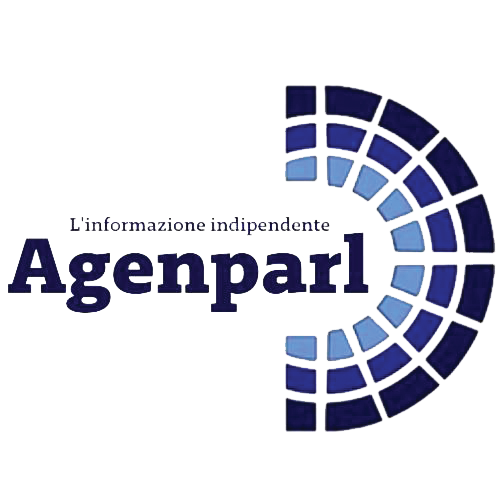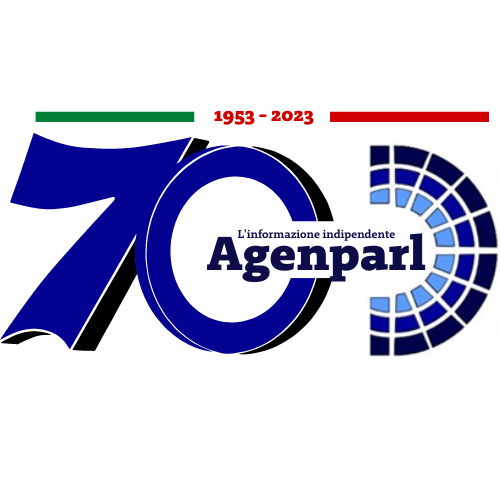 (AGENPARL) - Roma, 10 Luglio 2025
(AGENPARL) - Roma, 10 Luglio 2025(AGENPARL) – Thu 10 July 2025 https://whitney.us13.list-manage.com/track/click?u=387f59a72ae7b64ccae37d5c9&id=088b6a4f24&e=59415c6e7e
https://whitney.us13.list-manage.com/track/click?u=387f59a72ae7b64ccae37d5c9&id=a01d3f2c74&e=59415c6e7e
** THE WHITNEY MUSEUM OPENS CLAES OLDENBURG: DRAWN FROM LIFE
————————————————————
New York, NY July 10, 2025 — The Whitney Museum of American Art is pleased to announce Claes Oldenburg: Drawn from Life (https://whitney.us13.list-manage.com/track/click?u=387f59a72ae7b64ccae37d5c9&id=99ca4d0df2&e=59415c6e7e), a focused exhibition celebrating the vibrant drawing practice of Claes Oldenburg, one of the most inventive and influential artists of the twentieth century.
Drawn from Life recommences a biannual exhibition rotation in the Museum’s 7th floor galleries that will offer focused presentations of works in the collection. The exhibition showcases Oldenburg’s drawings from the 1960s, highlighting his playful, subversive reimaginings of the objects and spaces of everyday American life. While Oldenburg is best known for his monumental sculptures of familiar objects, sculptures that often surprise viewers with their unexpected textures and outsized proportions, this exhibition traces the origins of his sculptural imagination back to his works on paper. Oldenburg’s drawing practice was essential to his creative process, serving as a testing ground for ideas that would eventually transform the visual landscape of contemporary art.
The exhibition follows Oldenburg’s early explorations on paper, beginning with The Street (1959–60), a series in which he drew inspiration from graffiti, signage, and other graphic elements of New York City to create raw, expressive depictions of urban life. Building on this foundation, Oldenburg’s The Store (1961–64) and The Home (1963–69) series feature exuberant, cartoonlike renderings of food, clothing, and household appliances—motifs that would become central to his colorful, soft sculptures, such as Soft Dormeyer Mixer (1965), which is on view in the exhibition, “Untitled” (America).
In 1965, Oldenburg began to experiment with scale in his drawings, imagining everyday objects, from fire hydrants to teddy bears, expanded to colossal proportions and looming over entire cityscapes. These visionary sketches not only challenged conventional notions of monumentality but also anticipated the artist’s later site-specific public sculptures, which continue to provoke, amuse, and delight audiences worldwide. Drawn entirely from the Whitney’s extensive holdings of Oldenburg’s works on paper, Drawn from Life reveals the remarkable range of his draftsmanship and his radical redefinition of what a “life drawing” could be. It offers visitors an intimate look into how Oldenburg observed, transformed, and ultimately reimagined the world around him through the simple but powerful medium of drawing.
Claes Oldenburg: Drawn from Life is organized by Antonia Pocock, Curatorial Assistant.
** PRESS CONTACT
————————————————————
For press materials and image requests, please visit our press site at whitney.org/press or contact:
Ashley Reese
Whitney Museum of American Art
(212) 671-1846
Whitney Press Office
whitney.org/press
(212) 570-3633
** ABOUT THE WHITNEY
————————————————————
The Whitney Museum of American Art, founded in 1930 by the artist and philanthropist Gertrude Vanderbilt Whitney (1875–1942), houses the foremost collection of American art from the twentieth and twenty-first centuries. Mrs. Whitney, an early and ardent supporter of modern American art, nurtured groundbreaking artists when audiences were still largely preoccupied with the Old Masters. From her vision arose the Whitney Museum of American Art, which has been championing the most innovative art of the United States for ninety years. The core of the Whitney’s mission is to collect, preserve, interpret, and exhibit American art of our time and serve a wide variety of audiences in celebration of the complexity and diversity of art and culture in the United States. Through this mission and a steadfast commitment to artists, the Whitney has long been a powerful force in support of modern and contemporary art and continues to help define what is innovative and influential in American art today.
Whitney Museum Land Acknowledgment
The Whitney is located in Lenapehoking, the ancestral homeland of the Lenape. The name Manhattan comes from their word Mannahatta, meaning “island of many hills.” The Museum’s current site is close to land that was a Lenape fishing and planting site called Sapponckanikan (“tobacco field”). The Whitney acknowledges the displacement of this region’s original inhabitants and the Lenape diaspora that exists today.
As a museum of American art in a city with vital and diverse communities of Indigenous people, the Whitney recognizes the historical exclusion of Indigenous artists from its collection and program. The Museum is committed to addressing these erasures and honoring the perspectives of Indigenous artists and communities as we work for a more equitable future. To read more about the Museum’s Land Acknowledgment, visit the Museum’s website (https://whitney.us13.list-manage.com/track/click?u=387f59a72ae7b64ccae37d5c9&id=fa7c20d666&e=59415c6e7e) .
** VISITOR INFORMATION
————————————————————
The Whitney Museum of American Art is located at 99 Gansevoort Street between Washington and West Streets, New York City. Public hours are Monday, Wednesday, and Thursday, 10:30 am–6 pm; Friday, 10:30 am–10 pm; and Saturday and Sunday, 10:30 am–6 pm. Closed Tuesday. Visitors twenty-five years and under and Whitney members: FREE. The Museum offers FREE admission and special programming for visitors of all ages every Friday evening from 5–10 pm and on the second Sunday of every month.
============================================================
Whitney Museum of American Art
99 Gansevoort Street New York, NY 10014
** whitney.org (https://whitney.us13.list-manage.com/track/click?u=387f59a72ae7b64ccae37d5c9&id=74d83f2aae&e=59415c6e7e)
** (https://whitney.us13.list-manage.com/track/click?u=387f59a72ae7b64ccae37d5c9&id=d827e431dc&e=59415c6e7e)
** (https://whitney.us13.list-manage.com/track/click?u=387f59a72ae7b64ccae37d5c9&id=269edec241&e=59415c6e7e)
** (https://whitney.us13.list-manage.com/track/click?u=387f59a72ae7b64ccae37d5c9&id=447fce5009&e=59415c6e7e)
** (https://whitney.us13.list-manage.com/track/click?u=387f59a72ae7b64ccae37d5c9&id=ceb6de6f83&e=59415c6e7e)
to change the types of emails you receive from the Whitney.
this email to a friend.
from all Whitney emails.
Image credit:
Claes Oldenburg, Suggested Design for a Brochure Announcing Ray Gun Show at the Judson Gallery, 1960. Pastel, wax crayon, typewriter ink, and graphite pencil on paper; Pastel and wax crayon on paper (verso), 8 3/8 × 10 3/4in. (21.3 × 27.3 cm). Whitney Museum of American Art, New York; purchase with funds from The Lauder Foundation, Evelyn and Leonard Lauder Fund for the Acquisition of Master Drawings and the Drawing Committee 99.114a-b. © Claes Oldenburg
